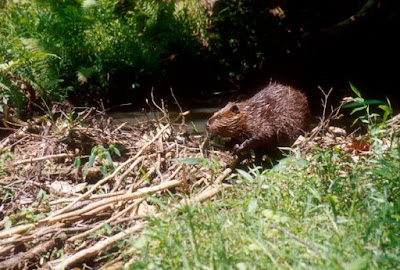Let's Get Tissues from Shelved Fossils!
Even
though secular scientists have a habit of limiting their thinking based
on their worldview (such as calling part of our DNA "junk" because they
don't understand it, then are proved wrong), I'll allow that grabbing
tissue samples from fossils on the shelf is mighty unusual. Maybe it has
something to do with paleoproteomics being a new field of study, and
people are looking for a chance to saddle it up. A giant beaver fossil
had been on a museum's shelf for 170 years, coated with varnish, and
getting dusty. Someone got the bright idea of finding a place to look
for samples, and struck collagen. They want to test more in-house
fossils, they're not being shelf-ish.
Of
course, instead of asking how collagen can last millions of Darwin
years and challenging the ruling paradigm, scientists got all het up
about asking how this can further understanding of evolution. Evidence shows that Earth was created recently. Can't they find some real science to do?
 |
| Not-giant beaver at Prince William Forest, Virginia, image credit: US National Park Service |
The ability to examine original proteins in off-the-shelf fossils should tell you something about evolutionary timescales.To read the rest of this short article, click on "Paleoproteomics Misses the Implications".
Scientists found original collagen in the fossil of a giant beaver sitting on a shelf in the New York State Museum. PhysOrg hints they were surprised: